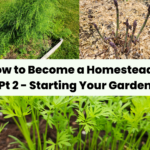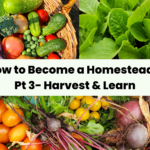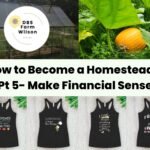In what felt like the snap of my fingers I went from living a completely city-bound life to dreaming of self-sufficiency in the country.
The 2020 pandemic changed everything in my life. It slowed me down, helped me see what mattered and introduced me to the simple joy of truly being present and making food with my owns hands. I’m so grateful for the pandemic, as it helped me see what truly mattered and made me prioritize things in my life to follow that dream and become a homesteader.
Once I decided that this was the life for me, I had no idea where to begin. It seemed like an impossible journey.
How could we move to the country when our jobs were in the city?
Could I really grow food enough to be self-sufficient when I barely knew how to cook?
If you’re wondering the same thing – then you’re in the right place.
This five-part mini-series walks you through the steps I took to go from city-slicker to homesteader in just a few short years.
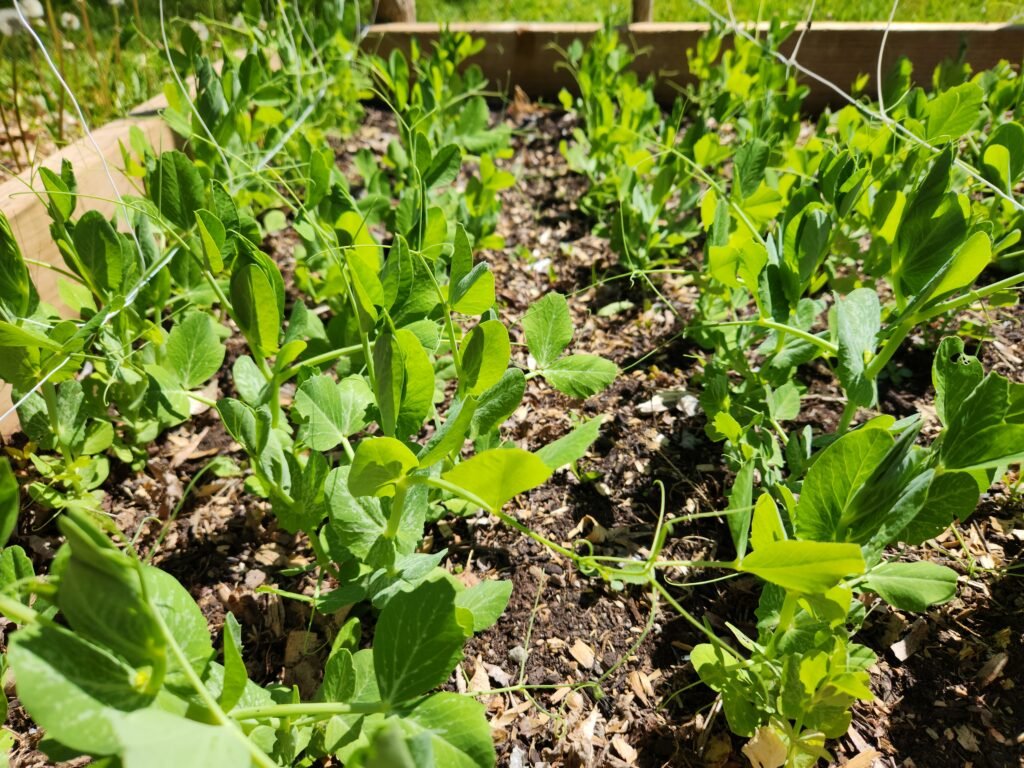
My First Step: Food
It started small, in a tiny suburban backyard with an 8×8 garden bed. We planted a traditional garden bed, some tomatoes, cucumbers, zucchini, peas, lettuce and one potato.
We focused first on eating real, whole foods. We stopped eating out at restaurants and completely cut out pre-made food and processed foods. Instead we opted for whole, homemade meals and it literally changed our lives.
We began canning and freezing our garden abundance to utilize throughout the winter. We learned how to bake our own bread and (proudly) haven’t bought a loaf from the store since 2020! These are our go-to recipes we’ve been using for years now:
The more we cooked, the more we learned. Food became the foundation of our homesteading life. But we wanted to do more. We loved our time in the garden, learning, growing, eating real food and becoming more self-reliant in a time when food was becoming scarce.
By 2021 we had made big career changes, moved to a property with space to grow, and built nine 4×12 garden beds, a greenhouse, and brought home our first livestock – chickens.
Now years later, we’re still learning and improving (life would be boring without it). We focus on growing the foods we eat most, preserving the harvest, and dreaming of our future property filled with fruit trees, gardens, and herbal medicine beds. We’ve come a long way and I truly hope to help others reading this with what I discovered to get us here.
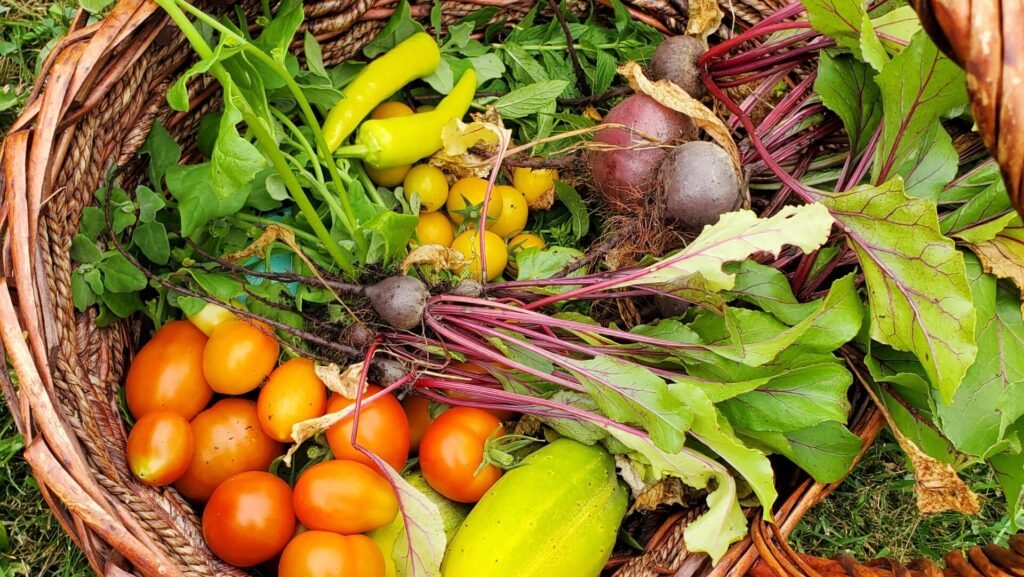
Step 1: Make Your Own Food
Quick answer: The first step to becoming a homesteader is learning to make your own food from scratch – no acreage required.
Making your own food is simple, but powerful. It’s the foundation to your homesteading lifestyle.
Of course sometimes it’s necessary to get take-out (think unexpected hospital visits, long day trips to see family, illnesses, etc). I still do this for some of those reasons listed above. However, once you’re growing your own food, you will probably want to cook with it most of the time!
Even small changes add up quickly. If you usually grab coffee on your way to work, start making it at home. If take-out is a weekly habit, plan a few easy meals ahead of time.
This isn’t about perfection – it’s about awareness.
When you start cooking at home, you’ll automatically shop more intentionally, waste less, and save money for future homestead goals. (Think about how often you might have purchased chicken breasts because ‘they were on sale’ and then you didn’t have a plan for when you were going to use them, so they ended up going bad. Planning your meals is the key to intentional grocery shopping).
Example swaps to start today:
- Make all weekday coffees at home.
- Plan and prep a week’s worth of meals.
- Try one homemade snack or condiment (granola, hummus, or bread).
Money saved now becomes money for your dream property later.

Step 2: Choosing Whole Foods
Once you’re comfortable cooking at home, the next step is to focus on whole foods – real ingredients in their natural state. While this might sound the same as making your own food, it’s very different.
Whole foods aren’t pre-packaged or filled with preservatives. They’re the raw building blocks of healthy, homemade meals.
Buying whole foods means buying the whole, real ingredient. Then using that with other whole foods and spices to make your meal. Whole foods don’t usually come pre-packaged. Some examples:
- Instead of boxed chicken fingers, slice a real chicken breast, bread it yourself, and bake it.
- Swap jarred sauces for simple combinations of olive oil, garlic, and herbs.
- Buying a pumpkin and taking out the seeds to roast and snack is an example of whole foods. Get the Roasted Pumpkin Seed recipe here.
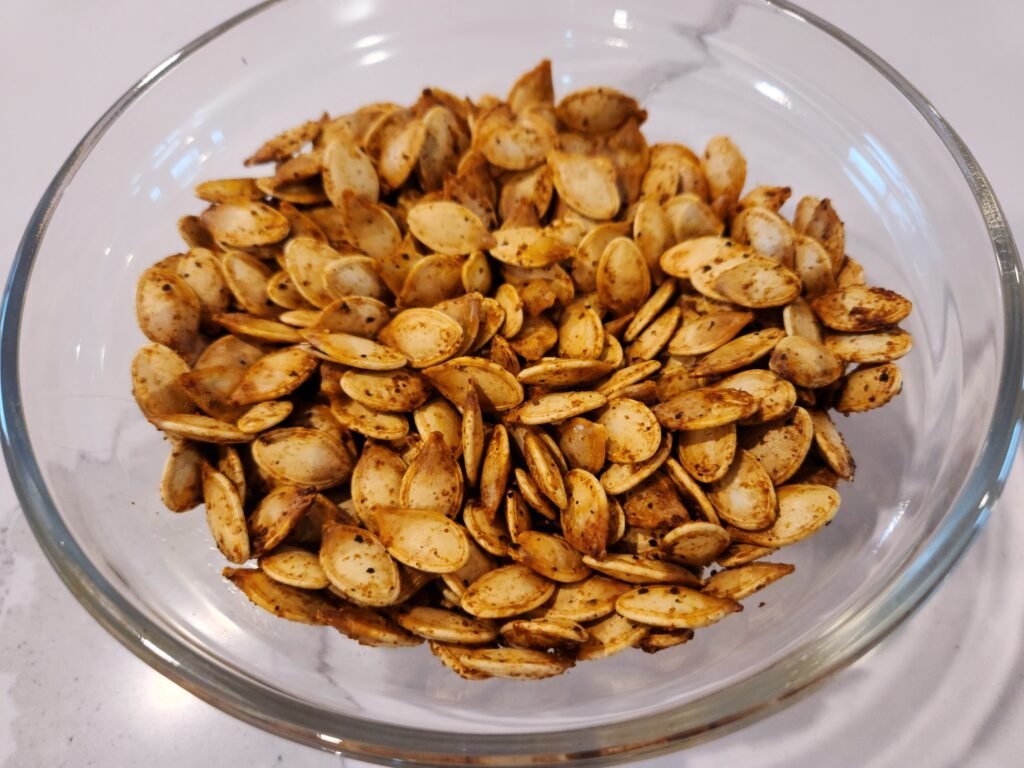
Even seemingly “healthy” convenience foods can be more processed than you realize. Take hummus – it’s a great snack with your homegrown carrots or cucumbers, but most store versions are loaded with unnecessary additives. (As a former delicatessen worker I promise you, the hummus expiration date is months from when we receive it and put it out on the shelf).
Homemade hummus, on the other hand, uses simple, clean ingredients: chickpeas, tahini, olive oil, lemon, garlic, cumin, and salt. Most recipes make 2-3 store sized hummus for half the price, plus you can spice it up however you want. You can even freeze the extra to use later or intentionally buy foods to use with it to consume while it’s still fresh. It’s cheaper, fresher, and freezes beautifully.
These small swaps build the habits that define a homesteader’s kitchen – intentional, nourishing, and thrifty.
Step 3: Eat From the Garden
When you grow your own food, you naturally eat better – and cheaper. Every vegetable you harvest is a whole food at its peak.
Learning to cook from your garden is the next milestone.
Kale is a great example of a bountiful crop that is easy to grow, and starting to increase in price. Besides using it for salads or as a replacement for lettuce, you can also bake or dehydrate small pieces of kale with oil and spices to make crispy delicious kale chips. A perfect garden-grown snack to eat instead of buying fried potato chips from the store.
The key is to start with what you grow and learn a few ways to use it. That’s how you’ll make the most of your garden investment and prevent waste.
Even before you have a big garden, practice now with store-bought whole foods. By the time your beds overflow with zucchini and beets, you’ll already know what to do with them.
And if you’re starting this journey in the middle of winter, these kitchen skills will prepare you perfectly for when planting season arrives.
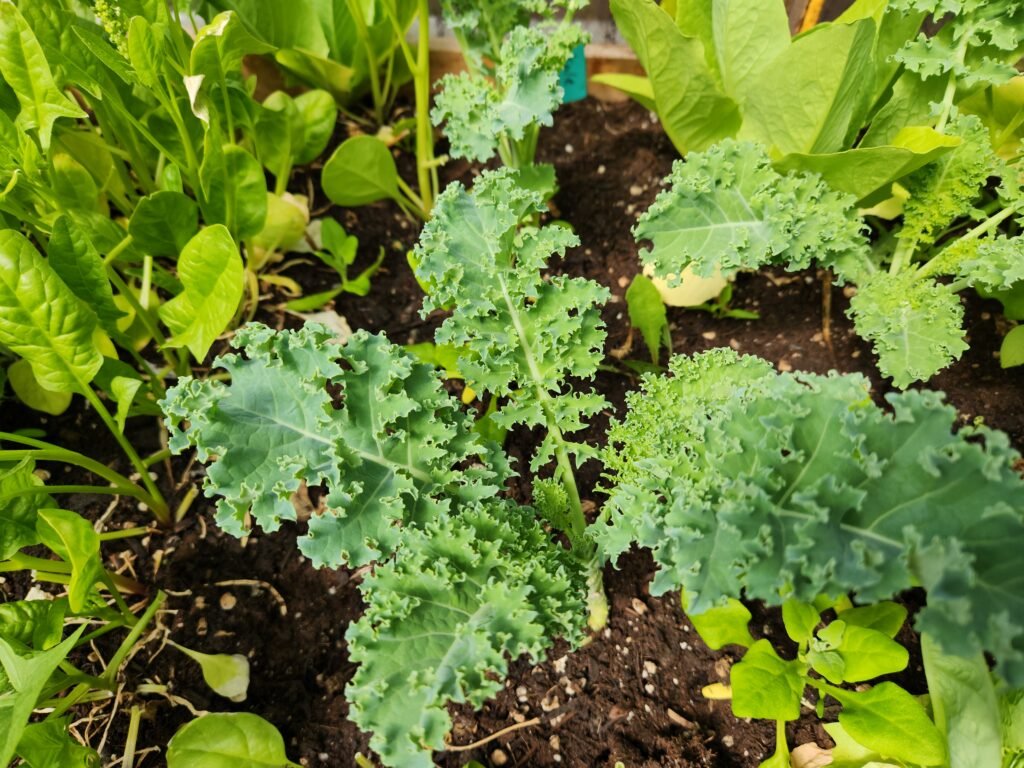
What’s Next?
It can be a tad intimidating – having a full garden with an abundance of whole foods. Learning how to utilize these ingredients is key to making the most money from your garden investment. Plus it encourages much healthier eating habits.
So before you have an entire garden of kale, beets, and radishes. Start by buying whole foods and learn how to make them into delicious meals and snacks. That’s why I encourage making your own food and buying whole foods as the first steps in this How to Become A Homesteader mini-series.
Up next, is Part 2 – Starting Your Garden.
We also have plenty of growing guides, seed saving guides a Medicinal Herbs Hub and many delicious recipes. We are growing our website with more articles all the time, and we invite you to grow with us – join our newsletter for seasonal reminders and garden tips straight to your inbox! If you liked this article please give it a like and comment to help share it with others. Happy Eating & Gardening!


